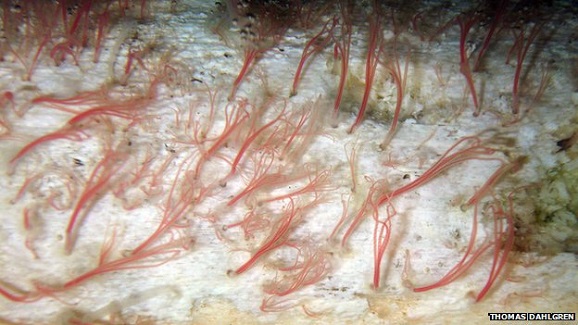Cloned Horses Allowed To Race And Zombie Worms Found In Antarctic

The animal kingdom is capturing all kinds of headlines this week, what with newly discovered carnivorous mammals making cloud forests all the more frighteningly cuddlesome. But those guys aren’t quite as disturbing as the zombiezombie worms terrorizing the Antarctic floor. More on them later, because we’re going to talk about how cloned horses can legally race now. (It’d be really nice if someone could figure out a way to make the above paragraph translate into one of Nostradamus’ quatrains.)
Since 2007, a small number of members from the American Quarter Horse Association, one of the largest horse breeding groups in the country, have been trying to get a rule change on allowing horses or relatives of horses created by cloning to be allowed registration into the group. This week, U.S. District Judge Mary Lou Robinson ordered the AQHA to change its policies, allowing the cloned horses into the mighty ranks of their non-genetically-altered money-making brethren. While the MLB is up to its metaphorical eyeballs in athletes getting popped for performance-enhancing drugs, horse racing will soon see science-based creations get the red carpet laid out for them. Obviously those two instances aren’t directly related, but it strikes an odd chord. Can you imagine once people get into the genetic modification game?
The decision doesn’t come without some backlash, of course. The privately-run AQHA, home to 280,000 members and over 750,000 animals, are appealing the ruling, claiming their rules are lawful and that cloned horses do nothing to improve the bloodline of the breed and could potentially narrow the gene pool down, causing worse genetic diseases to occur. Robinson will likely sign the documents later this week, and it’ll be another 30 days before it will go into effect. So the AQHA better hope that appeal goes through almost immediately.

Meanwhile, at the bottom of Antarctic waters, zombie worms (Osedax) swim amok, eating through bones with an acid secretion. Known to exist elsewhere in the world, two newly discovered species were found by an expedition team led by Dr. Adrian Glover of London’s Natural History Museum. With an interest in discovering how things decomposed beneath the icy waters, the team lowereded a platform of whale bone and wood down to the deep sea floor. 14 months later, they raised the platform and found that the two new worm species (Osedax antarcticus and Osedax deceptionensis) covered the bones, but that the wood seemed to have suffered no ill will. The researchers related the zombie worms to another small group of mud-dwellers who get by on little oxygen.
The fact that the wood didn’t decay proves the Antarctic Circumpolar Current keeps wood-eating mollusks Xylophaga from entering these waters. Given it isn’t an area where tree grown is a likely occurrence, the mollusks wouldn’t do any good going around there anyway. But this is really good news for teams looking to locate the crashed remains of Ernest Shackleton’s sunken ship Endurance, which the crew was forced to abandon in 1915, in what is assumed to be the Weddell Sea. Without any wood-munching critters gobbling down evidence, there is a really good chance the ship’s remains will be fully intact. The same wouldn’t go for any whales who happened to be trapped beneath it however.












